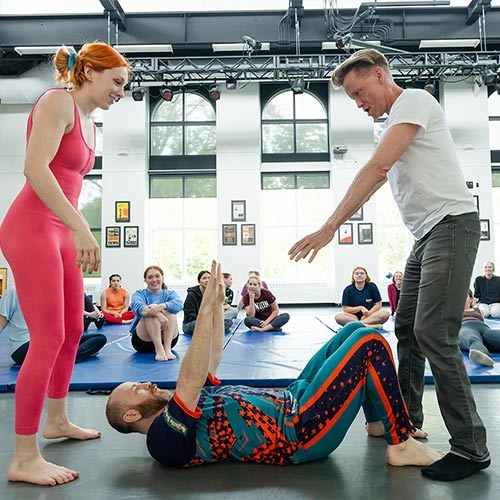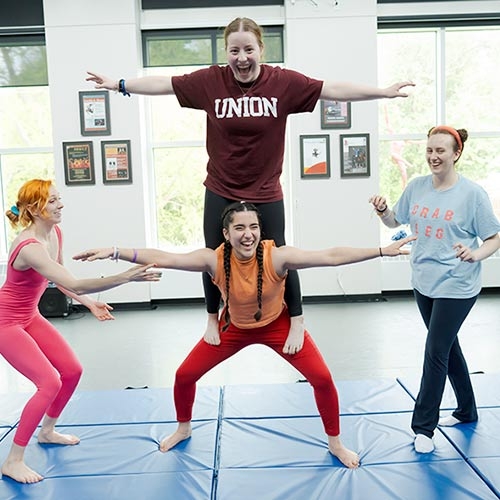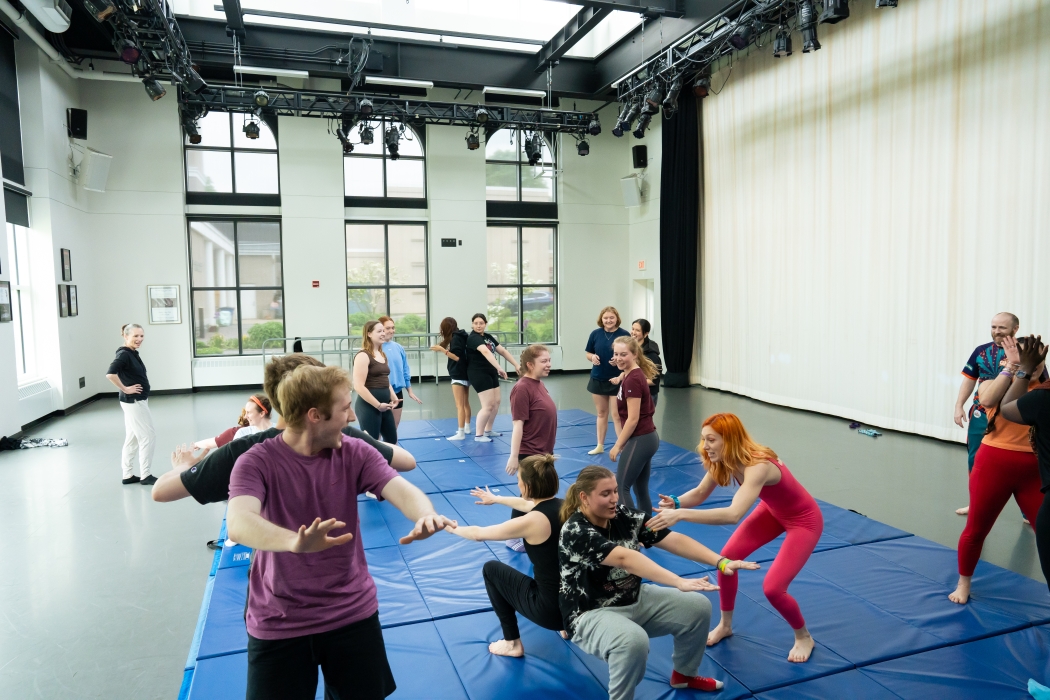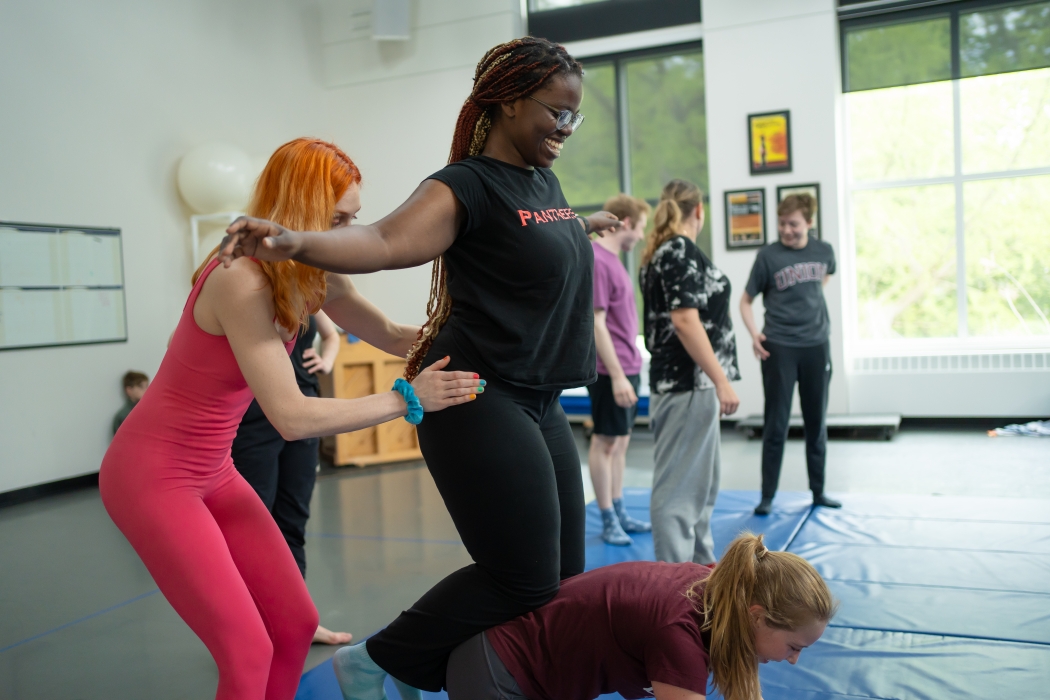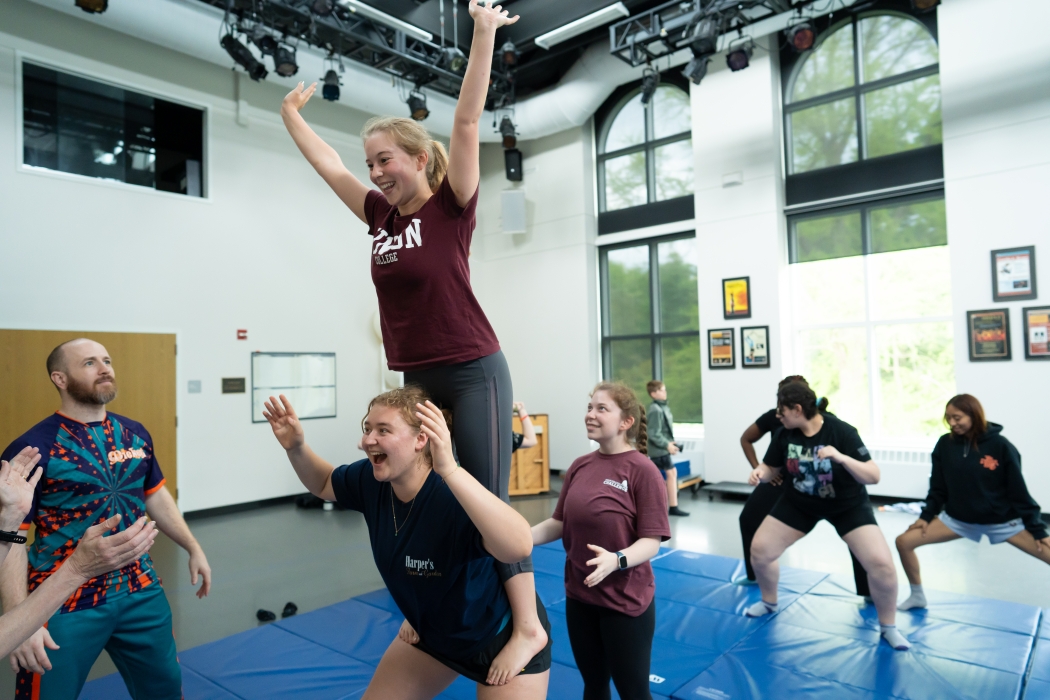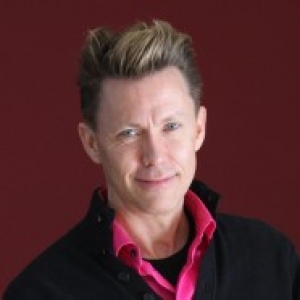Other than enjoying Barnum’s Animals crackers when she was growing up, Sage Stinson '25 didn’t know much about the circus.
She is learning more than she imagined in the new course, Introduction to Circus Arts: Culture, Imagination and Marvel, which debuted this spring.
“The most intriguing thing about circus arts is how historical it is,” said Stinson, a psychology major with minors in dance and anthropology.
“The circus once united families and groups of friends, and it created its own sense of family for those involved. In addition, learning about the economic impact of the circus arts has been fascinating.”
Indeed, the new course covers more than jugglers, clowns, trapeze artists or other stereotypical circus performers.
“It offers an examination of the power of the circus to incite marvel, to shout out its own magical place in our imagination, and to inspire both wanderlust and belonging,” said Charles Batson, professor of French and Francophone studies, who created and teaches the course, offered by the Department of Theater and Dance.
After all, he notes, “It is an art that calls for us to run away with it.”
Batson brings a wealth of knowledge to the tent. He is co-founder of the international conference known as Circus and its Others (CaiO). Its most recent gathering, in Bogotá, Colombia, in February, drew scores of circus academics, artists and professionals from the Americas, Europe and Asia.
Introduction to Circus Arts looks at the Western circus from the mid-18th century to its current multibillion dollar industry, which encompasses performers, designers, costumers, corporate sponsors, audiences and other communities.
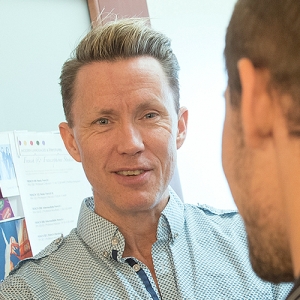
“My psychology brain likes to wonder why circuses keep evolving and changing, and why the audience is so attracted to watching thrill-seeking activities,” says Stinson. “As a dancer, I see how dance disciplines are fundamental to circus athletes. The circus culture that promotes a sense of belonging ties into my anthropology studies.
“It’s so interesting how all of these things connect.”
Students in the course take part in analyses and discussions as well as workshops designed to develop skills in juggling, ground acrobatics, aerial feats and clowning.
The workshops, given in the Henle Dance Studio by guest circus performers, have been a particular source of enjoyment. For at least one student, they are the fulfillment of wishful thinking.
“Whenever I visited the circus, I always had an unexplainable urge to join the performers on stage,” said Melanie (Mel) De La Cruz ’26, a political science and theater double major, and Seward Fellow with a minor in dance.
De La Cruz was particularly drawn to the clowning workshop.
“We learned the intricacies of physical comedy and the formulaic structure of true clowning,” she said. “This branch of entertainment, with its root in acting, empathy, humanity and emotion, is captivating.”
In exploring the circus as activism and an agent of social change, the course analyzes stereotypes of identity, gender and sexuality, marginalized practices, (dis)abilities and national origins. These overlap with themes of labor, immigration, the spread of African American music and the suffrage movement.
“The philosophy of belonging and culture is so prevalent in circus,” said De La Cruz. “The intersections between political science and my theater disciplines are more than you might think. The history we have explored has opened my eyes to the social issues that are still very present today and how circus is applicable to the real world.”
In looking at the contemporary circus, the course focuses on Quebec and France, which have supported what was long known as “nouveau cirque.” This includes the well-known Cirque du Soleil. Batson is editor, with Patrick Leroux, of “Cirque Global: Quebec’s Expanding Circus Boundaries” (McGill, 2016).
For De La Cruz, expanding her knowledge about the circus has been a joy.
“I love this class,” she said. “It allowed me to take risks and deep dive into another realm of the performing arts that has, is and will captivate audiences everywhere.”
